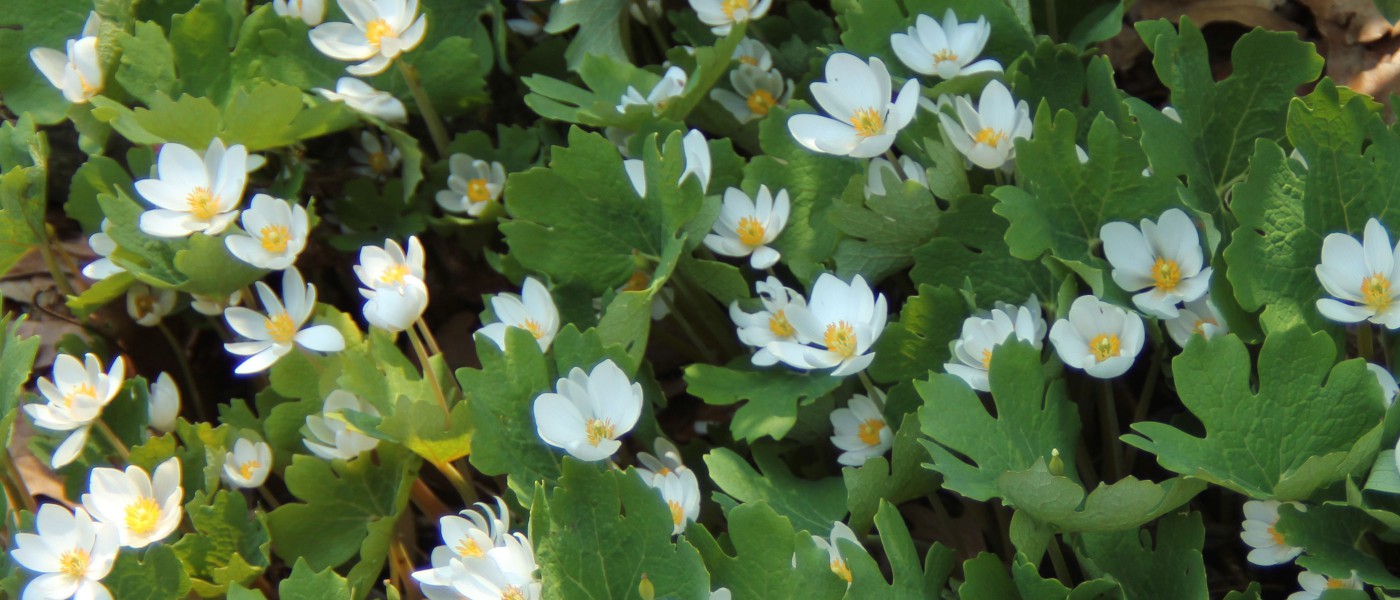Bloodroot in Bloom
Spring ephemeral Sanguinaria canadensis (commonly known as bloodroot, puccoon, red puccoon, Indian paint, snakebite, tetterwort, sweet slumber) is in bloom in the Native Flora Garden this week.
I reserve a special sort of admiration for the first rugged plants to slip free of winter’s lingering grasp, and bloodroot is one that deserves to be lauded. The leaf and flower bud emerge simultaneously, with the leaf lovingly encasing and protecting the delicate flower bud until it can burst open on warm sunny April days. The flower resembles an airplane propeller in shape, with pure crystalline petals radiating from a center of golden-yellow stamens and pistil. Sadly, the flowers don’t last more than a few days before the petals collapse into a pile below. The foliage continues to expand and will persist well into the summer and early autumn. The plant's most common name, bloodroot, alludes to its potent orange-red sap, said to stain anything it touches, which exudes from the stem and rhizome when damaged.
Its Latin species name, sanguinaria, translates as “bleeding.” This sap was highly prized by Native Americans for a multitude of uses. It was employed as a dye for baskets and clothing, and when mixed with animal fat it became a fearsome body paint characteristic of the Algonquin and Lenape people of this region. Tetterwort refers to its use for treating skin ailments, and as it was once believed to induce sleep, bloodroot also became known as sweet slumber. In modern times, the sap was found to contain the alkaloid sanguinarine, a compound with antimicrobial and anti-inflammatory properties. It can be found as an ingredient in some herbal toothpastes and mouthwashes as well as in topical ointments for treating warts and moles. Like trilliums, the seeds of bloodroot are ant dispersed, which means this plant is slow to colonize areas. There are also two attractive double flower forms, S. canadensis f. multiplex and S. canadensis ‘Flore Pleno’—expensive but commercially available.


